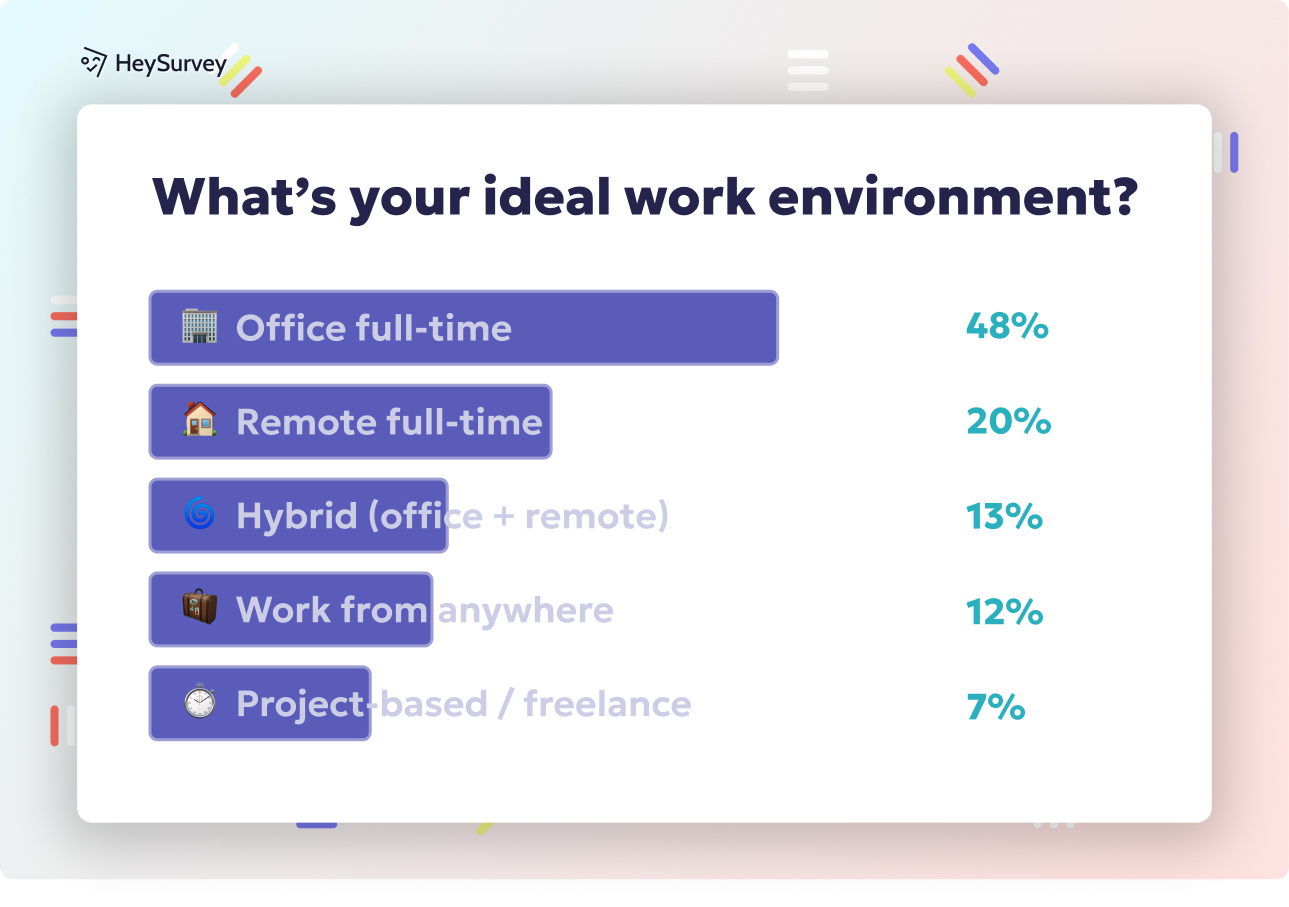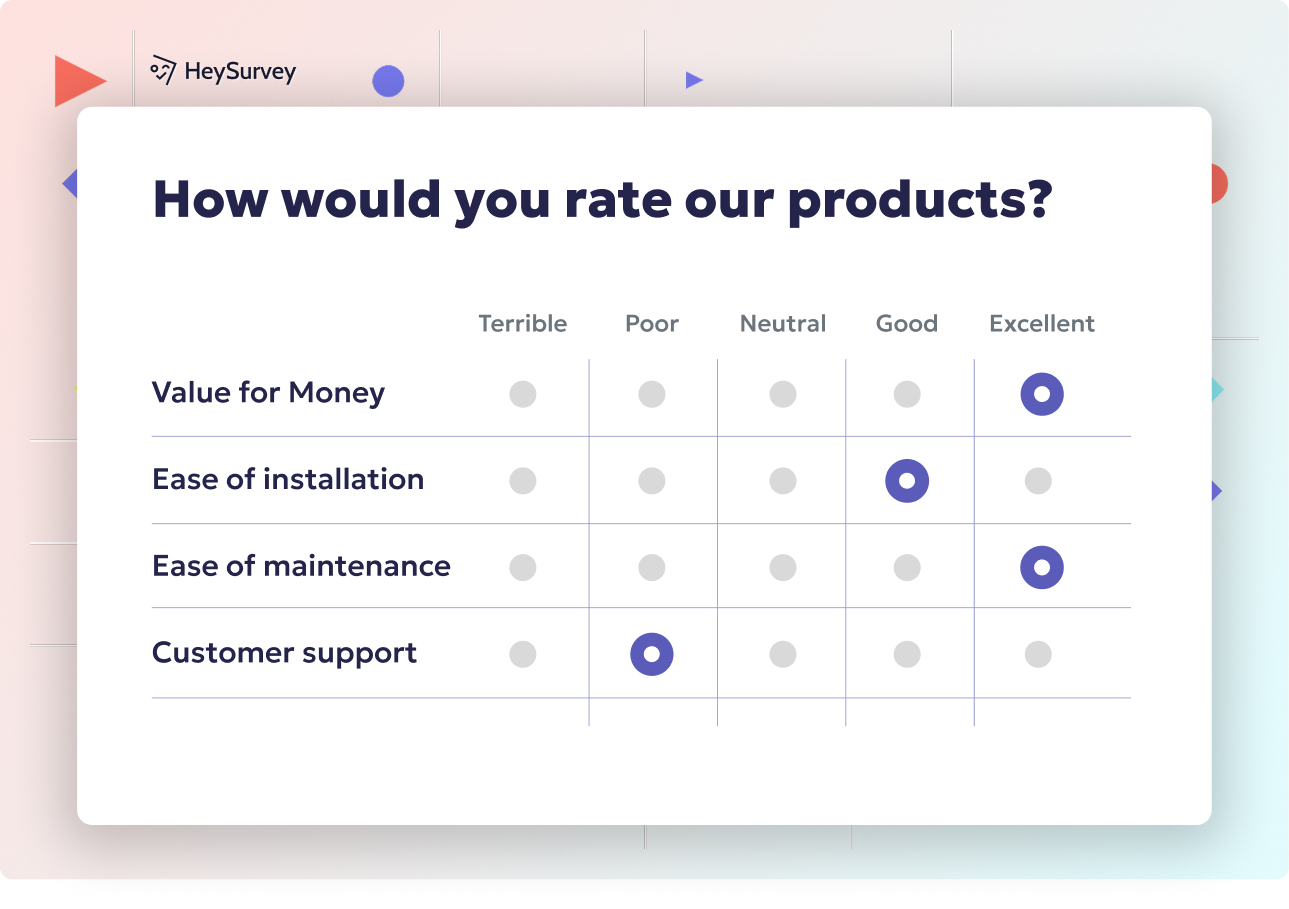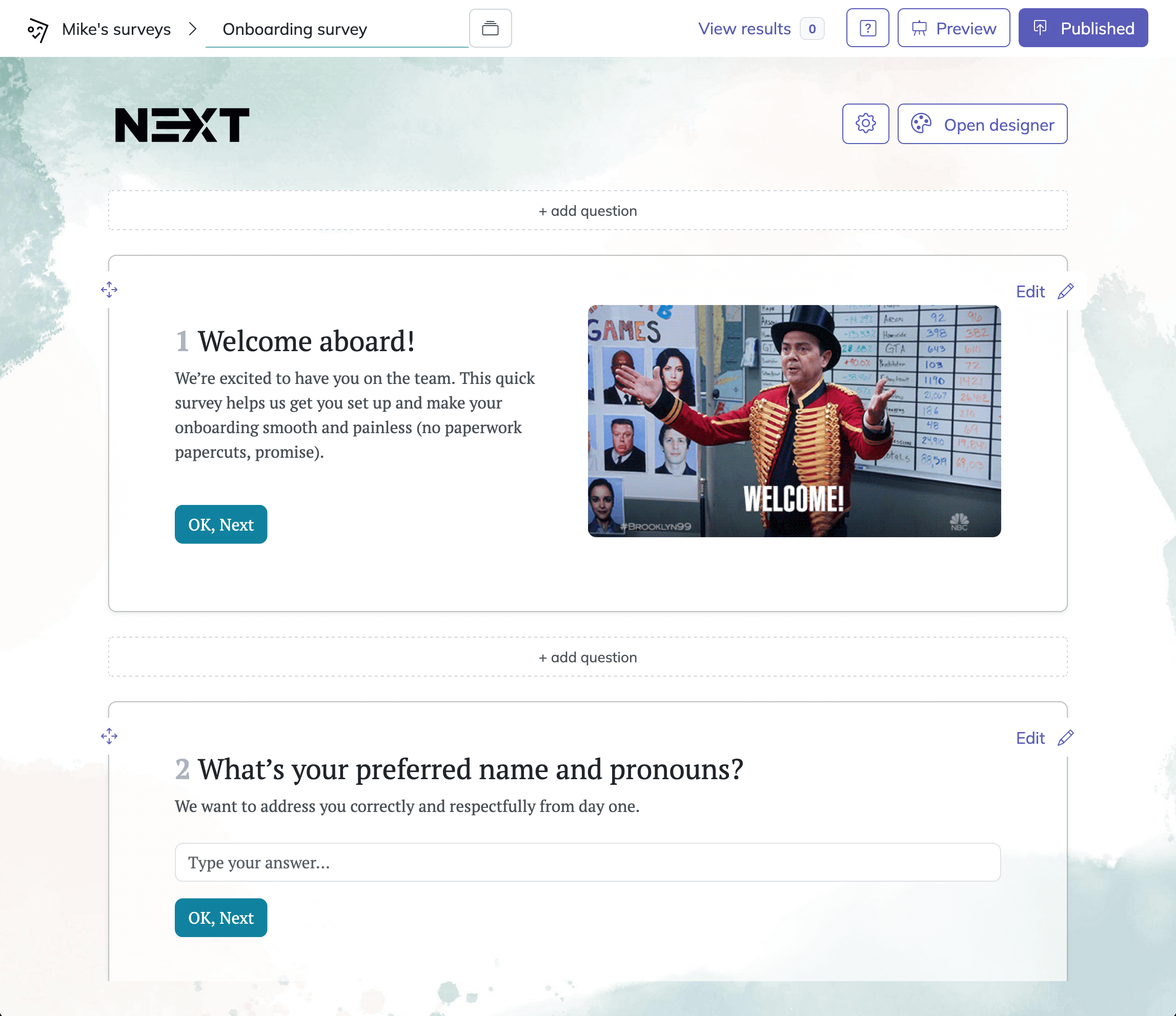31 Survey Questions Examples for Students to Improve Learning
Discover 28 survey questions examples for students across 6 key types to boost engagement, feedback, safety, and career readiness in schools.
Keen on getting the real scoop from students? Well-crafted surveys are the trusty toolkit for anyone eager to boost school life—from teachers hungry for feedback to tech teams tweaking learning tools. They help collect honest insights in K-12 classrooms and higher-ed halls, guiding data-driven decisions that actually make a difference. Student surveys aren’t just for finals; they pop up at smart moments, like mid-semester check-ins, after new policies roll out, or before big school events. In this article, you’ll discover six of the most impactful survey types, complete with sample questions, and you'll pick up actionable best practices for crafting your own. Let’s make every student voice count!
Academic Engagement Survey
Why & When to Use
Everyone wants to know: are students motivated, and do they actually care about what’s happening in class? Academic Engagement Surveys dig deep into students’ day-to-day habits and energy levels. Teachers and school leaders use them to spot trends in participation, whether students are keeping up with assignments, and what sneaky obstacles get in the way.
You’ll see these surveys pop up: - During mid-semester “pulse checks” for a little academic temperature reading. - As part of RTI (Response to Intervention) to target students who may need extra support. - When trying out new instructional models, such as flipped classrooms, to measure student buy-in and adjust strategies quickly.
Using this type of survey empowers educators to: - Pinpoint motivational slumps before they snowball into bigger issues. - Give feedback that matches real student needs—no more one-size-fits-all lectures! - Celebrate study strategies that actually get results.
If you want to adjust lesson plans in real time, nothing beats direct input from students who, let’s face it, know best what keeps their brains working.
Sample Questions
How often do you complete assigned readings before class?
On a scale of 1–5, how interested are you in the topics we are currently studying?
What usually prevents you from participating in class discussions?
Which study strategies have helped you learn most effectively this term?
How much time do you spend on homework for this course each week?
Effective student engagement surveys should include clear, concise questions that assess behavioral, emotional, and cognitive dimensions, such as participation frequency, interest levels, and study habits. (questionpro.com)
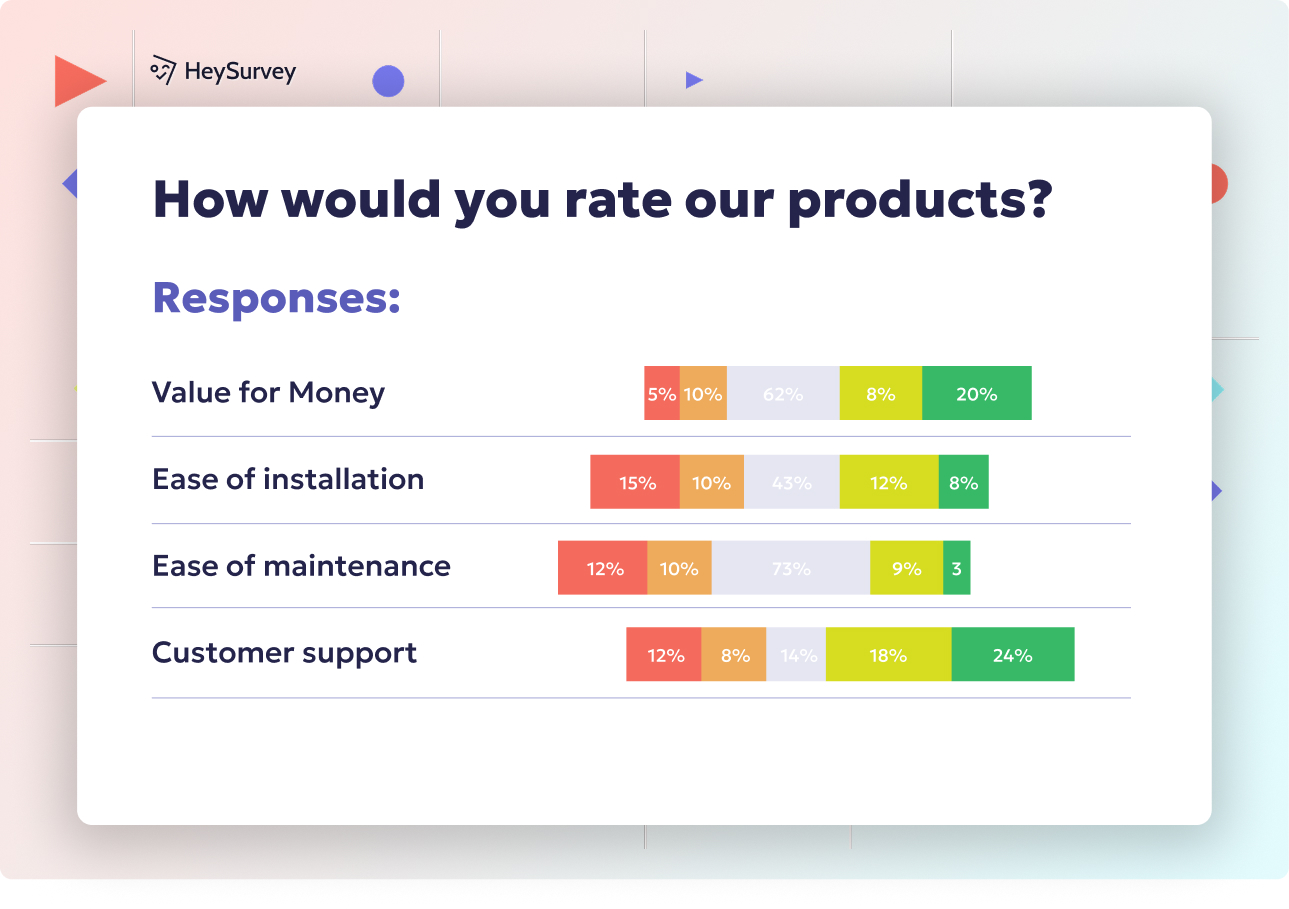
Creating your student survey with HeySurvey is as easy as 1-2-3. Follow these simple steps to get your survey up and running in no time!
Step 1: Create a New Survey
- Head over to HeySurvey and start a new survey by choosing either an empty sheet, a pre-built template, or text input creation.
- If you want a quick jumpstart, try opening one of our ready-made templates with the button below this instruction.
- Give your survey a clear internal name—you’ll love how organized it keeps your growing collection of surveys!
Step 2: Add Questions
- Click the Add Question button at the top or in between questions.
- Pick the question type: text input, multiple choice, scale, or other fun options.
- Type in your questions, like those example student survey questions you want to ask.
- You can make questions required, add descriptions, or even spice things up with images or GIFs.
- Don’t forget to keep question wording simple and clear to get the best answers!
Step 3: Publish Your Survey
- Once your questions are set and you’re happy with the flow, hit Preview to see what your students will see.
- Make any final tweaks in the designer sidebar if you want to change colors or fonts.
- When ready, click Publish to get your survey link. You’ll need an account to publish and access responses—fortunately, signing up is free and quick.
- Share your survey with students via email, classroom platforms, or embed it on your site.
Bonus Step 1: Apply Branding
- Add your school or program’s logo easily from the branding panel to give your survey a professional touch.
- Customize colors, fonts, and backgrounds to match your style or school colors. Your students will appreciate the polished look!
Bonus Step 2: Define Settings or Skip into Branches
- Use the Settings Panel to schedule your survey’s active dates, limit responses, or set redirect URLs after completion.
- Boost engagement by adding branching logic—questions that adapt based on previous answers—making the survey feel personalized instead of just another checklist.
Ready to start? Click the template button below and launch your first student survey with HeySurvey!
Course Feedback Survey
Why & When to Use
Course Feedback Surveys are the old standbys for academic improvement. With these, teachers grab both numbers and stories about what’s working, what’s wobbly, and what needs an overhaul in a class. Catching this feedback at mid-course lets you pivot while there’s still time for tweaks, and repeating it at the end delivers a full report card for next year.
Count on this survey type to: - Reveal hidden confusion over assignments or assessments before grading drama hits. - Highlight which parts of the curriculum get students’ brains buzzing with excitement, and which ones spark snores. - Spot wish-list resources that could make a good course truly great.
Heads-up for extra credit: - Pair mid-course and end-of-term surveys to spot changes and trends over time. - Combine open-ended questions with rating scales for more honest, nuanced answers.
Because students get a chance to speak up about what really matters, Course Feedback Surveys turn even the shyest learners into outspoken problem solvers.
Sample Questions
Which lesson or unit has been the most engaging so far, and why?
How clear are the learning objectives stated at the beginning of each unit?
Rate the fairness of the grading criteria used in this course (1–5).
What additional resources would help you understand the material better?
If you could change one aspect of this course, what would it be?
Effective course feedback surveys should include a mix of quantitative and qualitative questions, focusing on specific, actionable aspects of the course to gather meaningful insights. (umsl.edu)
Teacher Evaluation Survey
Why & When to Use
Teacher Evaluation Surveys flip the script by asking students to grade the teacher—no apples required! This tool gives classroom leaders direct, student-centered feedback on how they teach, listen, and create a respectful space where everyone feels heard.
You’ll usually find these surveys: - At the end of the term for a candid teacher “report card.” - Right after special projects, guest lectures, or any new teaching methods. - When schools need evidence for teacher growth and professional development.
Why use them? Because: - Students will spot the teaching habits that really click, as well as areas where teachers could be more supportive. - Teachers can celebrate what’s working (like making a boring topic fun) and tackle constructive criticism with clear action steps. - Classroom culture gets a boost when every voice is invited into the improvement process.
Trust these surveys to reveal just how approachable and inspiring a teacher really is—even if everyone acts shy in class.
Sample Questions
How well does your teacher explain complex ideas in ways you understand?
How approachable is your teacher when you need extra help?
Give one example of feedback from your teacher that improved your learning.
Rate how respectful the teacher is toward different opinions in class (1–5).
What could your teacher do to make lessons more engaging?
Social-Emotional Well-Being Survey
Why & When to Use
Let’s face it—school is about more than grades, and the best schools care about how students feel, not just what they know. Social-Emotional Well-Being Surveys get to the heart of students’ mental health, sense of safety, and support systems.
They come in handy: - Each quarter as part of an SEL (social-emotional learning) check-up. - Following big school changes or tough events—think new principals, major policy shifts, or anything that shakes up the student routine. - Whenever schools roll out new counseling or peer programs.
Why invest in these surveys? Because: - Students get a safe space to share worries that teachers might otherwise miss in the daily shuffle. - Counselors and SEL teams gain a map of where extra support or new initiatives are needed. - School communities foster a sense of belonging, which can boost academic results and cut down on discipline issues.
When you genuinely care how students feel, they’ll tell you what lifts them up—and what drags them down.
Sample Questions
How often do you feel connected to your classmates?
During the past two weeks, how frequently have you felt stressed about schoolwork?
Do you have at least one adult at school you can talk to when needed?
Which school activities make you feel most included?
What strategies help you manage stress both in and out of school?
Surveys assessing students' social-emotional learning (SEL) competencies and school climate are reliable, valid, and provide insights beyond traditional academic indicators. (edpolicyinca.org)
Campus Climate & Safety Survey
Why & When to Use
If students don’t feel safe, learning slows down—plain and simple. Campus Climate & Safety Surveys give students a platform to voice concerns about security, inclusivity, and how well anti-bullying policies actually work.
You’ll spot these surveys: - Once per year, as a way to track long-term progress. - After safety policy changes, like new lockdown drills or security staff. - When there’s a need to check for lingering problems following a bullying incident or community concern.
Smart schools use these surveys to: - Spot “hidden” safety risks that adults might overlook. - Check if students trust staff enough to report real issues instead of staying silent. - Upgrade safety plans with student-driven suggestions for a better, kinder campus.
Run these surveys regularly, and you’ll create a safer, more inclusive school climate for everyone—guaranteed.
Sample Questions
How safe do you feel in school hallways and common areas?
Have you witnessed or experienced bullying in the past month?
How comfortable are you reporting safety concerns to staff?
Rate the effectiveness of current anti-bullying programs (1–5).
What additional steps could the school take to improve campus safety?
Career Readiness & Guidance Survey
Why & When to Use
Every student has at least one big question: “What’s next?” Career Readiness & Guidance Surveys help schools figure out what students want, what they need, and what makes them nervous about the future.
Use these surveys: - Before students pick classes for next year or sign up for new programs. - Ahead of college or career fairs to match opportunities to real student interests. - To help guidance counselors spot gaps in skill-building or planning.
Offer this survey when you want to: - Spot skills students want to develop, from public speaking jitters to resume-building worries. - Connect teens to the right internships, job shadows, or guest speakers. - Ensure every student gets a head start planning for life after school—even if they change their minds next semester.
Surveying career dreams is both practical and motivating, turning fuzzy futures into real-life goals.
Sample Questions
Which careers interest you most right now?
How confident are you about choosing a college major or career path (1–5)?
What skills do you feel you need to develop for your desired career?
Have you met with a counselor to discuss post-graduation plans this year?
What type of internships or job-shadowing opportunities would you value?
Technology & Remote Learning Survey
Why & When to Use
Thanks to blended learning, Zoom classes, and device rollouts, technology questions are fresher than ever. Technology & Remote Learning Surveys give a crystal-clear picture of what’s working online—and what’s driving students up the virtual wall.
Best times to use: - After launching new learning platforms, such as a learning management system or educational apps. - As a follow-up when hybrid schedules shake up the usual classroom scene. - Any time your school district wants a reality check on device or internet access.
What can you learn? - Spot tech barriers before frustration leads to missed assignments. - Measure whether digital tools actually help students learn or just add confusion. - Gather creative ideas for future tech improvements straight from student “super-users.”
Listening to students on tech means fewer glitches, more engagement, and a smoother digital ride for everyone.
Sample Questions
Do you have reliable internet access at home for schoolwork?
How user-friendly is our learning management system (1–5)?
What technical issues have disrupted your learning recently?
Which digital tools help you learn best during remote lessons?
How would you rate your overall remote learning experience this semester?
Best Practices: Dos & Don’ts for Crafting Student Survey Questions
Crafting the perfect survey is half science, half art. To snag honest and useful answers, there are a few easy rules to follow—plus a couple of “don’ts” to avoid embarrassing survey fails.
Do: - Use plain language and age-appropriate vocabulary so students don’t need a dictionary or a decoder ring. - Keep Likert scales (those “1 to 5” ratings) consistent across your questions to reduce confusion. - Guarantee anonymity so students are more likely to offer honest, thoughtful feedback. - Limit surveys to 10–15 minutes—respect students’ time, and you’ll get more completed responses. - Pilot test survey questions with a small, diverse group of students for clarity and comfort.
Don’t: - Avoid double-barreled questions (e.g., “Was the class interesting and easy?”) that make students guess which part to answer. - Skip leading or biased wording, which can push students toward a particular answer instead of encouraging honest opinions.
Making sure every question is clear and unbiased helps you collect meaningful, actionable feedback—and avoids eye rolls in the process.
Conclusion & Next Steps
By combining multiple survey types, schools can create a 360-degree snapshot of student experiences, opinions, and ambitions. Each survey offers fresh insight, making it easier to analyze, share findings, and steer improvement efforts school-wide. Don’t forget to close the feedback loop by publicly celebrating victories—that’s how you keep students and staff engaged. Analyze results, act on what you learn, and tweak your surveys for even better results next time! With a little practice, student surveys can spark real, lasting change.
Related Student Survey Surveys
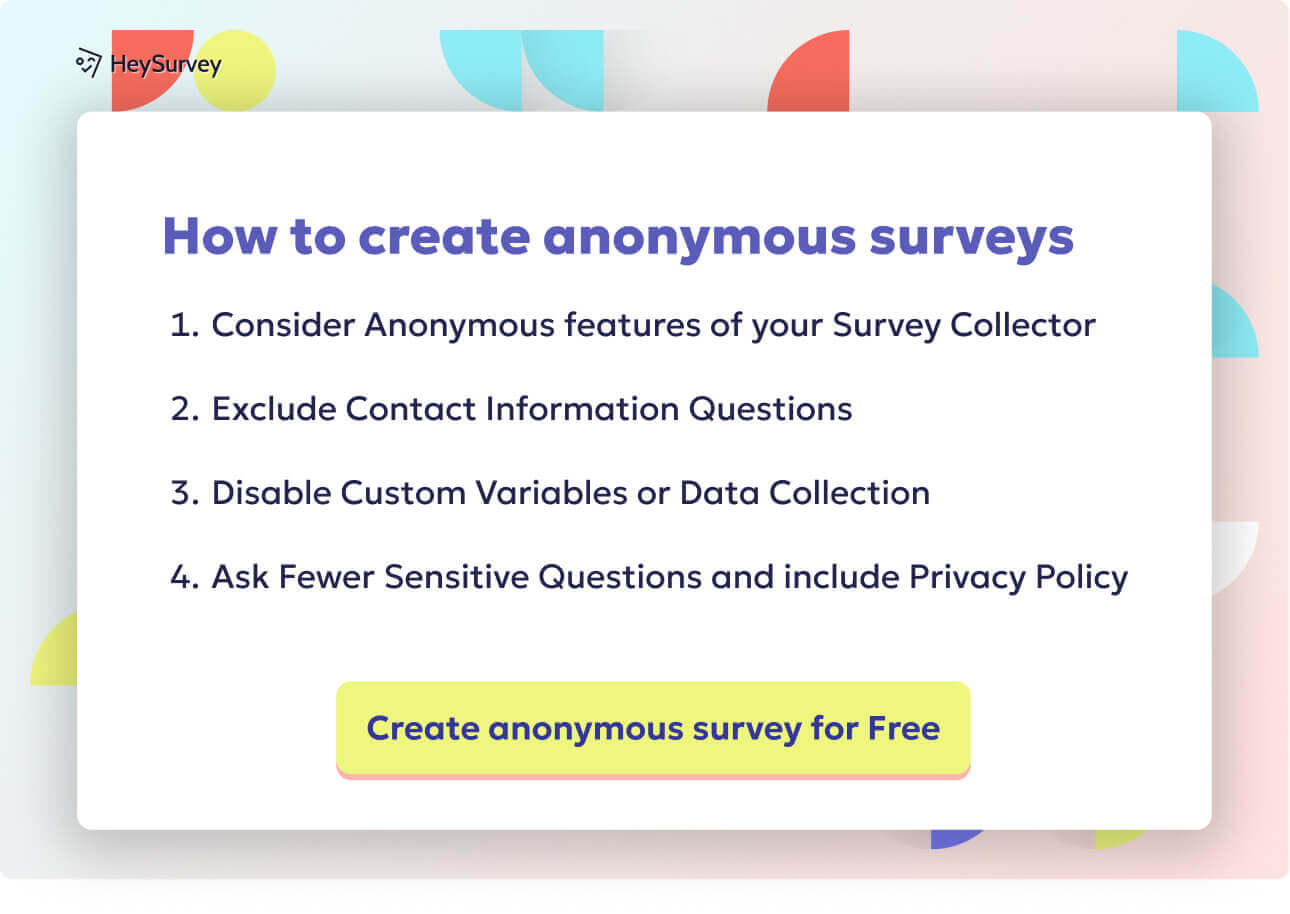
29 Class Survey Questions: Proven Templates for Every Stage
Discover 40+ proven class survey questions with detailed templates for every course stage to boos...

30 Survey Questions for Students: 6 Types & When to Use Them
Explore 6 powerful survey types with 30+ sample survey questions for students to boost engagement...
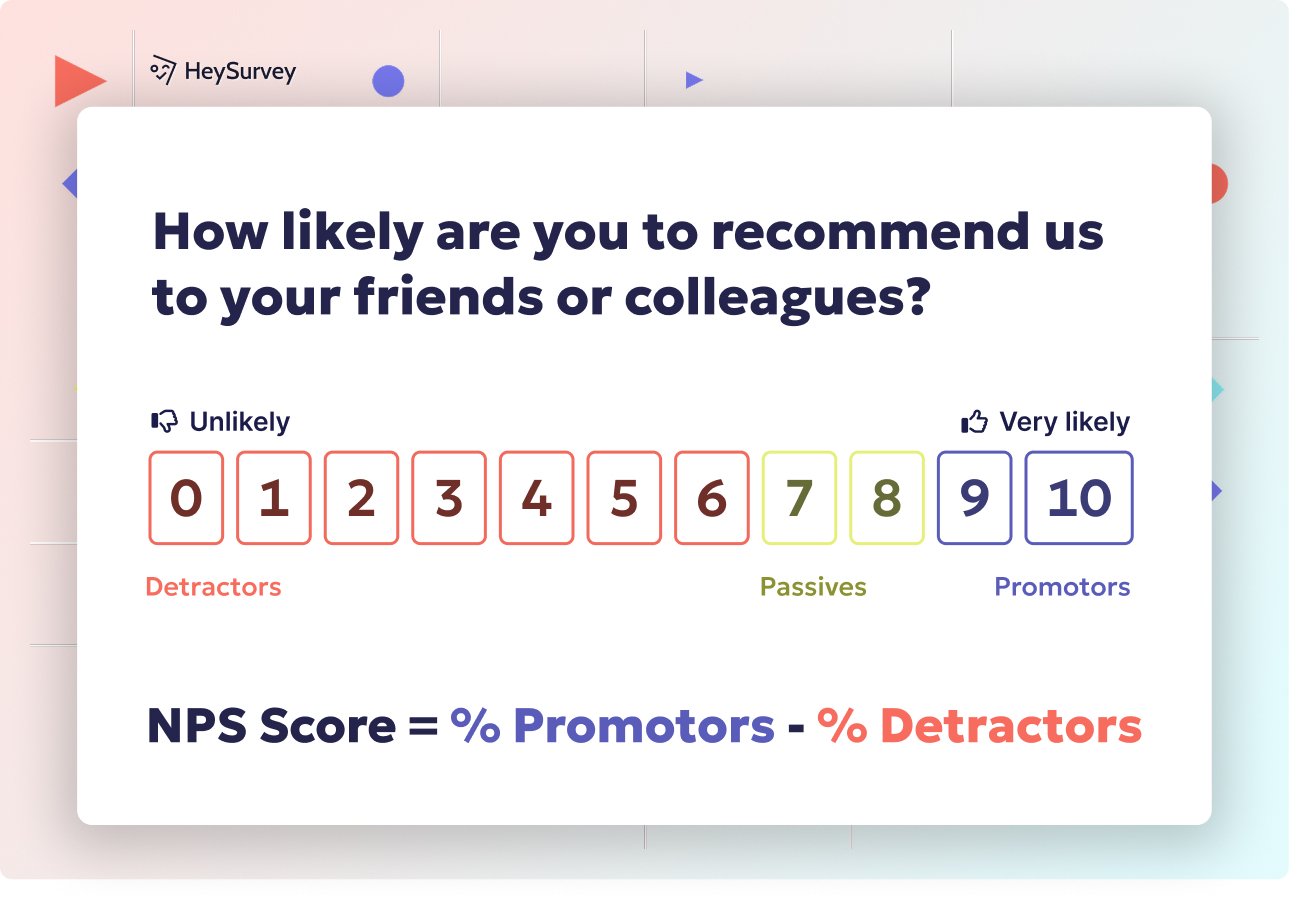
31 Essential Math Survey Questions for Students PDF Guide
Discover over 30 sample math survey questions for students PDF covering anxiety, confidence, stud...
